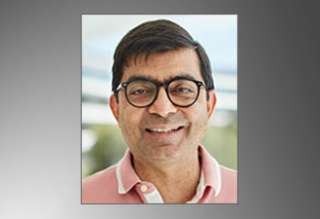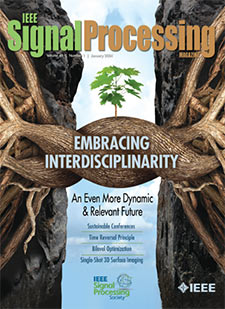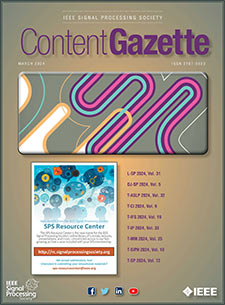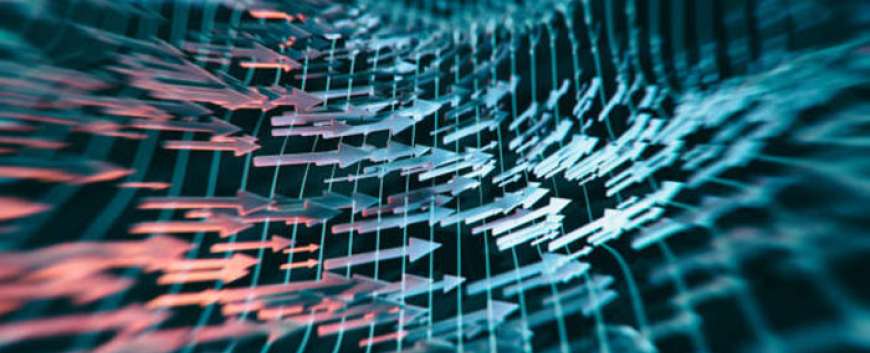- Our Story
- Publications & Resources
- Publications & Resources
- Publications
- IEEE Signal Processing Magazine
- IEEE Journal of Selected Topics in Signal Processing
- IEEE Signal Processing Letters
- IEEE/ACM Transactions on Audio Speech and Language Processing
- IEEE Transactions on Computational Imaging
- IEEE Transactions on Image Processing
- IEEE Transactions on Information Forensics and Security
- IEEE Transactions on Multimedia
- IEEE Transactions on Signal and Information Processing over Networks
- IEEE Transactions on Signal Processing
- IEEE TCI
- IEEE TSIPN
- Data & Challenges
- Submit Manuscript
- Guidelines
- Information for Authors
- Special Issue Deadlines
- Overview Articles
- Top Accessed Articles
- SPS Newsletter
- SigPort
- SPS Resource Center
- Publications Feedback
- Publications FAQ
- Blog
- News
- Dataset Papers
- Conferences & Events
- Community & Involvement
- Professional Development
- For Volunteers
- Information for Authors-OJSP
-
Home
Conferences14 April 2025 to 17 April 2025Conferences Events IEEE JSTSP Article IEEE Signal Processing Magazine IEEE TIFS Article IEEE TMM Article IEEE TSP Article Jobs in Signal Processing Lectures Machine Learning Seasonal Schools Signal Processing News SPM Article SPS Distinguished Lectures SPS Newsletter Article SPS Webinar SPS Webinars SPS Webinar Series Webinar webinars
-
Our Story
What is Signal Processing?

The technology we use, and even rely on, in our everyday lives –computers, radios, video, cell phones – is enabled by signal processing. Learn More » -
Publications & Resources
-
SPS Resources
- Signal Processing Magazine The premier publication of the society.
- SPS Newsletter Monthly updates in Signal Processing
- SPS Resource Center Online library of tutorials, lectures, and presentations.
- SigPort Online repository for reports, papers, and more.
- SPS Feed The latest news, events, and more from the world of Signal Processing.
-
SPS Resources
-
Conferences & Events
-
Community & Involvement
-
Membership
- Join SPS The IEEE Signal Processing Magazine, Conference, Discounts, Awards, Collaborations, and more!
- Chapter Locator Find your local chapter and connect with fellow industry professionals, academics and students
- Women in Signal Processing Networking and engagement opportunities for women across signal processing disciplines
- Students Scholarships, conference discounts, travel grants, SP Cup, VIP Cup, 5-MICC
- Young Professionals Career development opportunities, networking
- Get Involved
-
Technical Committees
- Applied Signal Processing Systems
- Audio and Acoustic Signal Processing
- Bio Imaging and Signal Processing
- Computational Imaging
- Image Video and Multidimensional Signal Processing
- Information Forensics and Security
- Machine Learning for Signal Processing
- Multimedia Signal Processing
- Sensor Array and Multichannel
- Signal Processing for Communication and Networking
- Signal Processing Theory and Methods
- Speech and Language Processing
- Technical Working Groups
- More TC Resources
-
Membership
-
Professional Development
-
Professional Development
- Mentoring Experiences for Underrepresented Young Researchers (ME-UYR)
- Micro Mentoring Experience Program (MiME)
- Distinguished Lecturer Program
- Distinguished Lecturers
- Distinguished Lecturer Nominations
- Past Lecturers
- Distinguished Industry Speaker Program
- Distinguished Industry Speakers
- Distinguished Industry Speaker Nominations
- Industry Resources
- IEEE Training Materials
- Jobs in Signal Processing: IEEE Job Site
-
Career Resources
- SPS Education Program Educational content in signal processing and related fields.
- Distinguished Lecturer Program Chapters have access to educators and authors in the fields of Signal Processing
- PROGRESS Initiative Promoting diversity in the field of signal processing.
- Job Opportunities Signal Processing and Technical Committee specific job opportunities
- Job Submission Form Employers may submit opportunities in the area of Signal Processing.
-
Professional Development
-
For Volunteers
-
For Board & Committee Members
- Board Agenda/Minutes* Agendas, minutes and supporting documentation for Board and Committee Members
- SPS Directory* Directory of volunteers, society and division directory for Board and Committee Members.
- Membership Development Reports* Insight into the Society’s month-over-month and year-over-year growths and declines for Board and Committee Members
-
For Board & Committee Members
Popular Pages
Today's:
- Submit a Manuscript
- (MLSP 2024) 2024 IEEE International Workshop on Machine Learning for Signal Processing
- Information for Authors
- IEEE Signal Processing Letters
- (SLT 2024) 2024 IEEE Spoken Language Technology Workshop
- SPS Scholarship Program
- IEEE Transactions on Multimedia
- IEEE/ACM Transactions on Audio Speech and Language Processing
- IEEE Transactions on Image Processing
- IEEE Transactions on Information Forensics and Security
- Conference Call for Papers
- Information for Authors-SPL
- Signal Processing 101
- Interview with Chetan Arora, Associate Professor, IIT Delhi, India
- IEEE Transactions on Signal Processing
All time:
- Information for Authors
- Submit a Manuscript
- IEEE Transactions on Image Processing
- 404 Page
- IEEE/ACM Transactions on Audio Speech and Language Processing
- IEEE Transactions on Information Forensics and Security
- IEEE Transactions on Multimedia
- IEEE Signal Processing Letters
- IEEE Transactions on Signal Processing
- Conferences & Events
- IEEE Journal of Selected Topics in Signal Processing
- Information for Authors-SPL
- Conference Call for Papers
- Signal Processing 101
- IEEE Signal Processing Magazine
Last viewed:
- Postdoctoral Researcher/Doctoral Student/Project Researcher (Imaging/Sensing/Automatic control)
- Postdoc/PhD Positions in Biomedical Image Analysis (Brno, Czech Republic)
- SPS Scholarship Program
- Postdoc position in the frame of an ERC project related to EEG-based brain-computer interfaces
- Postdoc position in signal processing algorithm design for EEG and neuro-sensor networks
- PhD Student or Postdoc in Biomedical Image Computing
- (ISBI 2024) 2024 IEEE International Symposium on Biomedical Imaging
- Hybrid Beamforming for 5G Millimeter-Wave Systems
- IEEE Signal Processing Letters
- (ISBI 2025) 2025 IEEE International Symposium on Biomedical Imaging
- (ACSSC 2024) 2024 Asilomar Conference on Signals, Systems, and Computers
- A Message from the New Society President
- (MLSP 2024) 2024 IEEE International Workshop on Machine Learning for Signal Processing
- IEEE/ACM Transactions on Audio Speech and Language Processing
- Multimedia Cloud Computing
SPS Blog Post: An Echo in Time: Tracing the Evolution of Beamforming Algorithms
You are here
Newsletter Menu
Newsletter Categories
Top Reasons to Join SPS Today!
1. IEEE Signal Processing Magazine
2. Signal Processing Digital Library*
3. Inside Signal Processing Newsletter
4. SPS Resource Center
5. Career advancement & recognition
6. Discounts on conferences and publications
7. Professional networking
8. Communities for students, young professionals, and women
9. Volunteer opportunities
10. Coming soon! PDH/CEU credits
Click here to learn more.
News and Resources for Members of the IEEE Signal Processing Society
SPS Blog Post: An Echo in Time: Tracing the Evolution of Beamforming Algorithms
SPS Blog Post: August 2023
Contributed by Ahmet M. Elbir, Kumar Vijay Mishra, Sergiy A. Vorobyov and Robert W. Heath, Jr., based on the IEEEXplore® article, “Twenty-Five Years of Advances in Beamforming: From convex and nonconvex optimization to learning techniques,” published in the 75th Anniversary Edition of the IEEE Signal Processing Magazine in June 2023, and the 75th Anniversary Webinar with the same title, available on the SPS Resource Center.
Introduction
Beamforming is a widely used signal processing technique that exploits arrays of sensors improve one of many possible application-driven performance objectives [1]. It finds applications in several engineering applications such as radar, sonar, wireless communications, acoustics, astronomy, seismology, and medical imaging. Recent advances in mobile communications, usage of large arrays, high-frequency sensors, near-field signal recovery, and smart radio environments have opened interesting and novel signal processing problems in beamforming (Fig. 1). This post summarizes the evolution of beamforming algorithms as encapsulated in our recent article “Twenty-Five Years of Advances in Beamforming: From convex and nonconvex optimization to learning techniques” published in the IEEE Signal Processing Magazine.
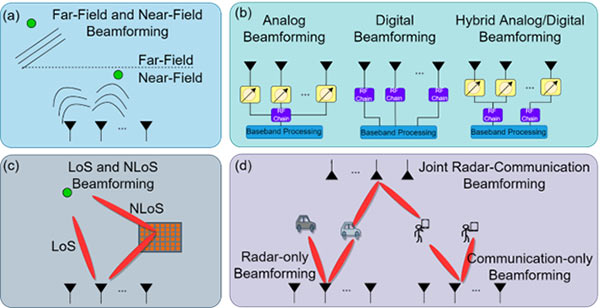
Figure 1. Major classes of beamforming techniques by (a) transmission range: far and near fields; (b) transceiver architectures: analog, digital, and hybrid beamforming; (c) paths: line-of-sight (LoS) and and non-LoS (NLoS) beamforming, wherein the NLoS path is controlled via joint active (transmitter) and passive (intelligent reflecting surface) devices; (d) applications: radar, communications, and joint radar-communications.
Open Calls
Society News
Publications News
Conference News
News & Announcements
Education & Resources
SPS Pioneers in IEEE History
Chapter & DL News
SPS on Twitter
- DEADLINE EXTENDED: The 2023 IEEE International Workshop on Machine Learning for Signal Processing is now accepting… https://t.co/NLH2u19a3y
- ONE MONTH OUT! We are celebrating the inaugural SPS Day on 2 June, honoring the date the Society was established in… https://t.co/V6Z3wKGK1O
- The new SPS Scholarship Program welcomes applications from students interested in pursuing signal processing educat… https://t.co/0aYPMDSWDj
- CALL FOR PAPERS: The IEEE Journal of Selected Topics in Signal Processing is now seeking submissions for a Special… https://t.co/NPCGrSjQbh
- Test your knowledge of signal processing history with our April trivia! Our 75th anniversary celebration continues:… https://t.co/4xal7voFER
Home | Sitemap | Contact | Accessibility | Nondiscrimination Policy | IEEE Ethics Reporting | IEEE Privacy Policy | Terms | Feedback
© Copyright 2024 IEEE – All rights reserved. Use of this website signifies your agreement to the IEEE Terms and Conditions.
A not-for-profit organization, IEEE is the world's largest technical professional organization dedicated to advancing technology for the benefit of humanity.


